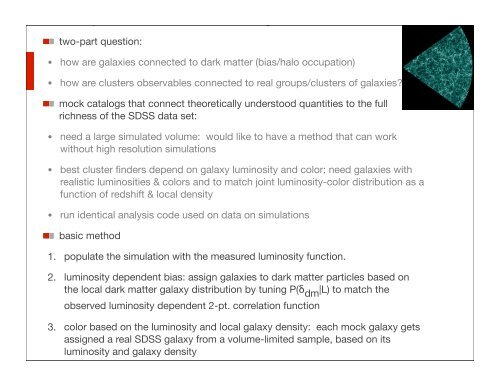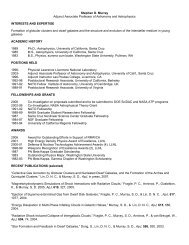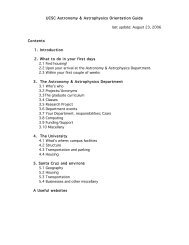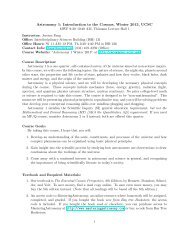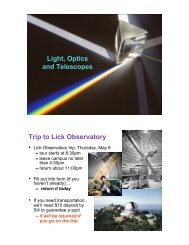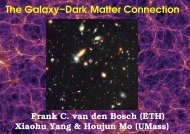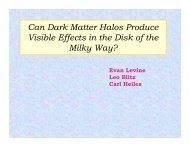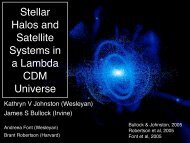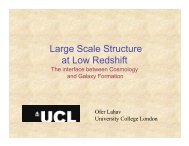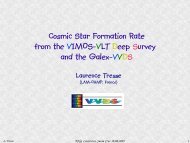Risa Wechsler - Astronomy and Astrophysics
Risa Wechsler - Astronomy and Astrophysics
Risa Wechsler - Astronomy and Astrophysics
You also want an ePaper? Increase the reach of your titles
YUMPU automatically turns print PDFs into web optimized ePapers that Google loves.
how to predict cluster observables theoretically?<br />
two-part question:<br />
• how are galaxies connected to dark matter (bias/halo occupation)<br />
• how are clusters observables connected to real groups/clusters of galaxies?<br />
mock catalogs that connect theoretically understood quantities to the full<br />
richness of the SDSS data set:<br />
• need a large simulated volume: would like to have a method that can work<br />
without high resolution simulations<br />
• best cluster finders depend on galaxy luminosity <strong>and</strong> color; need galaxies with<br />
realistic luminosities & colors <strong>and</strong> to match joint luminosity-color distribution as a<br />
function of redshift & local density<br />
• run identical analysis code used on data on simulations<br />
basic method<br />
1. populate the simulation with the measured luminosity function.<br />
2. luminosity dependent bias: assign galaxies to dark matter particles based on<br />
the local dark matter galaxy distribution by tuning P(δ dm |L) to match the<br />
observed luminosity dependent 2-pt. correlation function<br />
3. color based on the luminosity <strong>and</strong> local galaxy density: each mock galaxy gets<br />
assigned a real SDSS galaxy from a volume-limited sample, based on its<br />
luminosity <strong>and</strong> galaxy density


